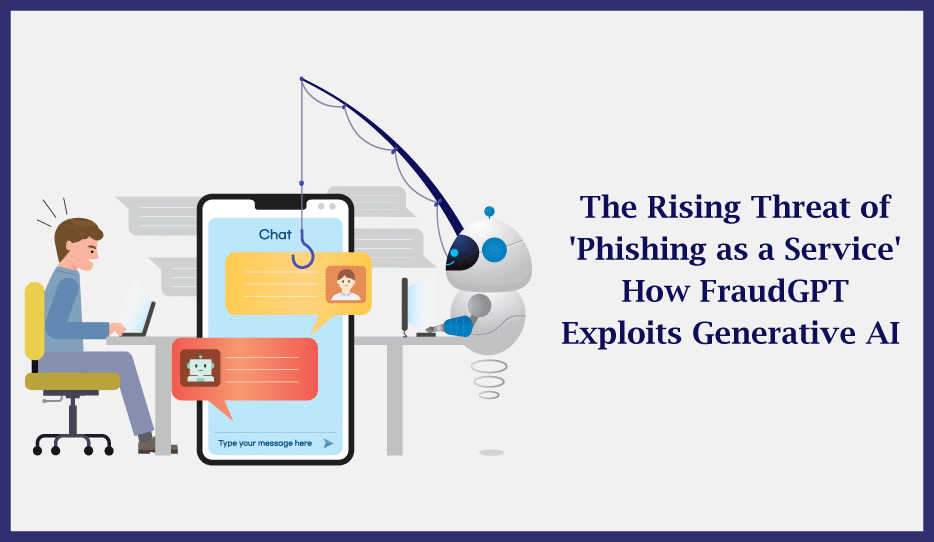
The power of Generative AI has given rise to both transformative advancements and unforeseen risks. One such risk has appeared in the form of ‘phishing as a service,’ as demonstrated by the emergence of FraudGPT. This malicious model, which has gained traction on darknet forums, is enabling cybercriminals to unleash sophisticated attacks with alarming ease. In this article, we delve into the unsettling capabilities of FraudGPT, its implications for cyber security, and the urgent need for proactive measures to mitigate its potential misuse.
The Evolution of FraudGPT
Recent developments have unveiled a troubling reality: malicious actors are harnessing Generative AI models to streamline cybercrime. FraudGPT, a model still hidden behind anonymity, has surfaced as a new tool in cybercriminals’ arsenals.
Circulating since July 2023, it is offered as a subscription at various price points, making it disturbingly accessible to a wider range of individuals. Its creator, operating under the alias CanadianKingpin, boasts that FraudGPT can facilitate the creation of malicious code, undetectable malware, phishing pages, and much more.
What is FraudGPT capable of
The capabilities of FraudGPT are deeply unsettling. With it, cyber criminals can:
Generate Malicious Code
FraudGPT can craft code designed to exploit vulnerabilities within computer systems, applications, and websites. This functionality equips attackers with the means to breach digital defenses swiftly and discreetly.
Create Undetectable Malware
Traditional security measures struggle to detect the malware created by FraudGPT. This enables cybercriminals to infiltrate systems, evade antivirus programs, and wreak havoc without immediate detection.
Forge Convincing Phishing Pages
One of the most concerning aspects of FraudGPT is its capacity to generate realistic phishing pages that mimic legitimate websites. This improves the effectiveness of phishing attacks, leading to higher success rates in deceiving victims
Craft Scam Pages and Letters
The model is also capable of generating content aimed at deceiving individuals into falling for fraudulent schemes, amplifying the scope of cybercrime.
Facilitate Learning of Hacking Techniques
Shockingly, FraudGPT can even produce educational content to aid cybercriminals in honing their hacking skills, thus creating an environment for even more fraud.
Discover Hidden Hacker Groups
This model scours the internet to uncover hidden hacker groups, underground websites, and black markets where stolen data is traded, further exacerbating the cybersecurity threat.
Implications for Enterprises
The sudden outspread of Generative AI has been both a boon and a bane for enterprises. While AI holds immense potential, the emergence of models like FraudGPT underscores the need for robust security infrastructure. The slow adoption of Generative AI by companies has primarily been fueled by concerns over security. Educating the workforce about the risks associated with AI-generated attacks is paramount to prevent data leaks and other cyber threats.
The rapid pace of AI model development has rendered security experts struggling to counter automated machine-generated threats. Even well-intentioned usage of AI tools, like ChatGPT, has led to inadvertent information leaks. With malicious actors attempting to exploit Large Language Models for their benefit, the sophistication and automation of these models pose grave cybersecurity threats.
Fighting fire with fire
AI is a double-edged sword. While it is being used with malicious intent, cyber security experts have also innovated AI for stronger digital asset security. Enter Acronis Cyber Protect Cloud (Perception Point) – an advanced threat protection tool that is powered with AI to block sophisticated email threats. This AI-powered email security tool is your doorway to protection against emerging AI-based threats.
